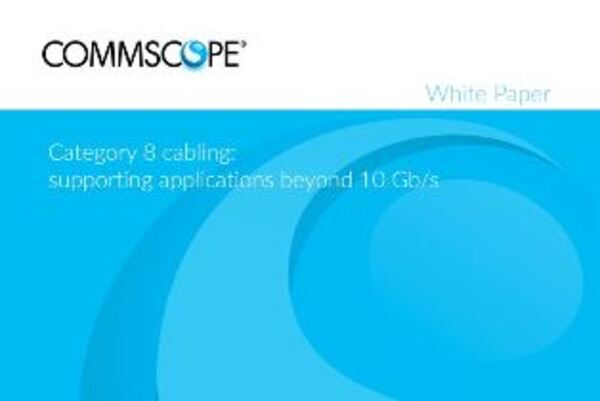Network speeds continue to increase as the data traffic managed by data center equipment grows exponentially. In addition to speed – cost, convenience and flexible upgradability are important considerations for data center network managers. BASE-T applications using balanced twisted pair structured cabling have been very popular in the past starting with 10BASE-T (10 MB) up to 10GBASE-T (10 GB) data throughput for both data center and enterprise networks. The 25GBASE-T and 40GBASE-T standards increase the data throughput capacity to 25 GB and 40 GB respectively, using Category 8 balanced twisted pair cabling.
Category 8 cabling quadruples the specified bandwidth of balanced twisted pair cabling from 500 MHz to 2000 MHz. This quadrupling of cabling bandwidth is utilized by the 40GBASE-T application to quadruple the previous maximum BASE-T data rate of 10 GB to a new maximum of 40 GB. The higher data rate was achieved while preserving backward compatibility, standardized RJ45 interfaces and cabling that is very similar to previous categories in size and installation practices. These higher data rates are supported over a maximum reach of 30 meters of cabling with two connections sufficient to serve a row of 20 cabinets or racks in equipment rooms or data centers.
CommScope has developed a white paper to help customers understand Category 8 cabling supporting theInstitute of Electrical and Electronics Engineers (IEEE) 40GBASE-T and 25GBASE-T applications, as well as use case configurations in data centers. In this white paper, CommScope describes the advantages that Category 8 cabling brings to data center networks including:
- RJ45 backward compatible cabling interface connector: Category 8 uses the same RJ45 interface connector that has been standardized since 1987. It is the predominant connector for both cabling interfaces and equipment interfaces. This also allows “plug and play” backward compatibility of lower category components with Category 8 components as needed.
- Auto-negotiation: IEEE 40GBASE-T and 25GBASE-T applications that use the higher bandwidth of Category 8, including the standardized RJ45 interface, can auto-negotiate to lower speeds up to and including 1000BASE-T. This allows cost-effective incremental upgrades of switches and servers in data centers, instead of forklift upgrades of entire racks of equipment.
Mid-span and end-span switches with structured cabling: Category 8 enables high speed applications to use mid-span and end-span switch placements with structured cabling between the switches and servers. This allows for better port utilization and more flexible changes to both equipment and servers since the cabling is independent of the network equipment, supporting multiple types and generations of equipment.
If you would like to download this white paper, visit CommScope.com or click here to learn about Category 8 cabling, components, testing and use cases in data center configurations.







